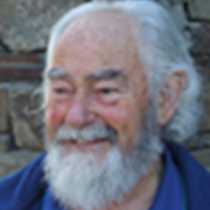Astoria, Oregon
We have been cruising for six days on the Sea Bird, in the Wake of Lewis and Clark. We have gone from Portland, Oregon, upriver on the Columbia and then on the Snake River to Clarkston, Washington. After looking at campsites of The Corps of Discovery in the area, we turned downstream once more. After enjoying the drama of the Columbia River Gorge and the lower river, we find ourselves for our final day at the mouth of the Columbia. We have visited Fort Clatsop and Cape Disappointment, where the expedition ended their westward journey. We tied up the Sea Bird at Astoria as a base of operations and visited the Maritime Museum. In addition, we went to the top of Coxcomb Hill where the Astoria Column is to be found. This column, completed in 1926, is a 125 foot tower decorated in a bas-relief technique called sgraffito that combines paint and plaster carvings. They tell the story of the coming of Europeans and Americans to the mouth of the Great River of the West. Captain Gray, its discoverer, Lewis and Clark, The Astor Party, the early fur traders, the fishermen, and the sea trade are all portrayed.
Having seen so many things during our cruise, we must stop here, near the end and reflect on what it means to us. We think of the Corps of Discovery, who for so long walked and paddled west, with their faces into the setting sun; who looked up in wonder at the same moon that we do now. Surely we can say that because of this cruise, we know the Snake and Columbia better. We can say that we know a segment of history better. But what we really know better is ourselves, and the Snake, the Columbia, and the Lewis and Clark expedition have helped.
We have been cruising for six days on the Sea Bird, in the Wake of Lewis and Clark. We have gone from Portland, Oregon, upriver on the Columbia and then on the Snake River to Clarkston, Washington. After looking at campsites of The Corps of Discovery in the area, we turned downstream once more. After enjoying the drama of the Columbia River Gorge and the lower river, we find ourselves for our final day at the mouth of the Columbia. We have visited Fort Clatsop and Cape Disappointment, where the expedition ended their westward journey. We tied up the Sea Bird at Astoria as a base of operations and visited the Maritime Museum. In addition, we went to the top of Coxcomb Hill where the Astoria Column is to be found. This column, completed in 1926, is a 125 foot tower decorated in a bas-relief technique called sgraffito that combines paint and plaster carvings. They tell the story of the coming of Europeans and Americans to the mouth of the Great River of the West. Captain Gray, its discoverer, Lewis and Clark, The Astor Party, the early fur traders, the fishermen, and the sea trade are all portrayed.
Having seen so many things during our cruise, we must stop here, near the end and reflect on what it means to us. We think of the Corps of Discovery, who for so long walked and paddled west, with their faces into the setting sun; who looked up in wonder at the same moon that we do now. Surely we can say that because of this cruise, we know the Snake and Columbia better. We can say that we know a segment of history better. But what we really know better is ourselves, and the Snake, the Columbia, and the Lewis and Clark expedition have helped.




